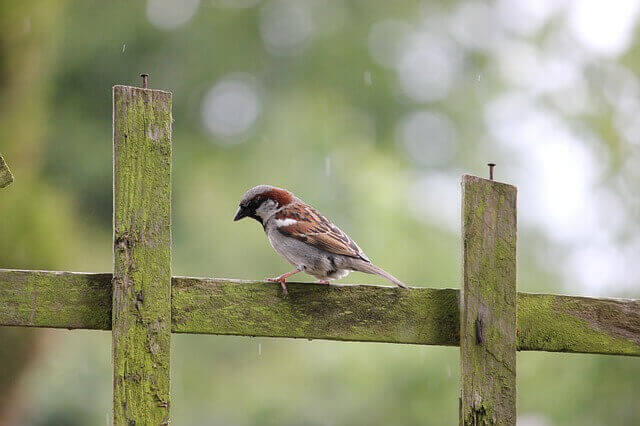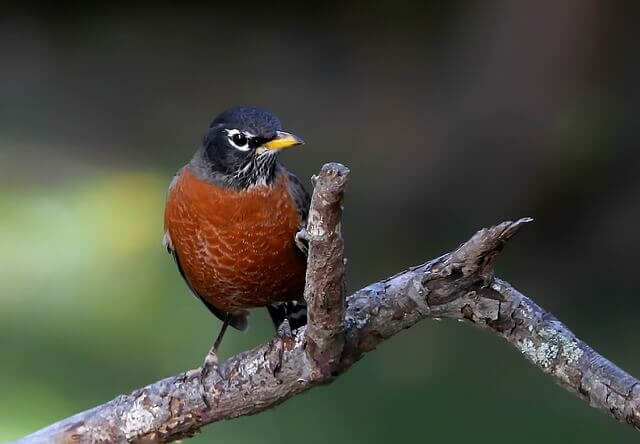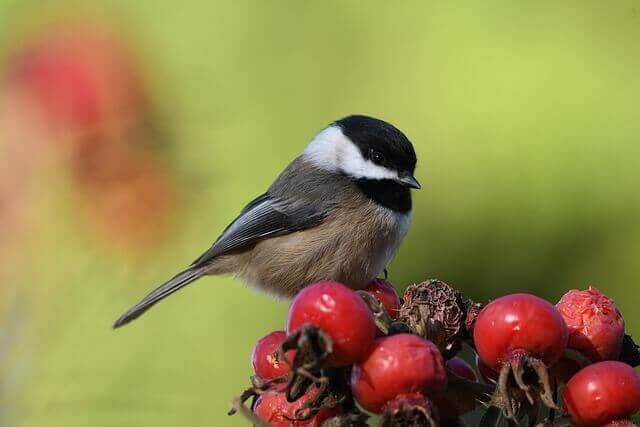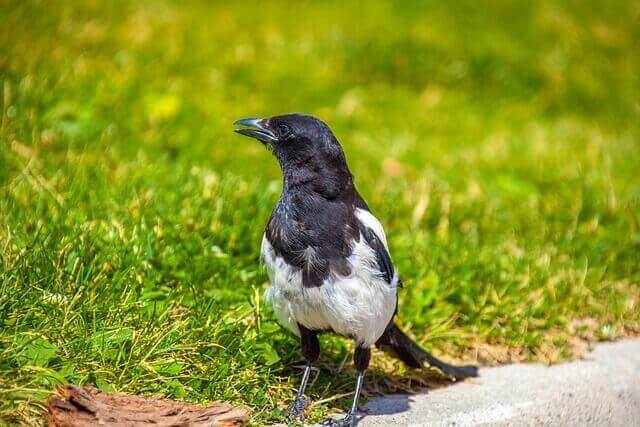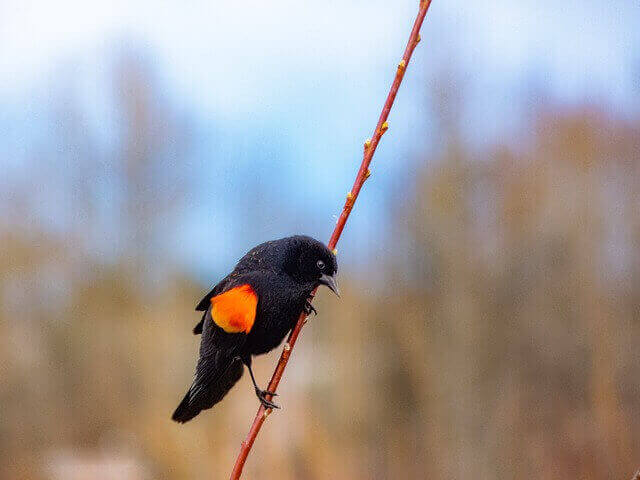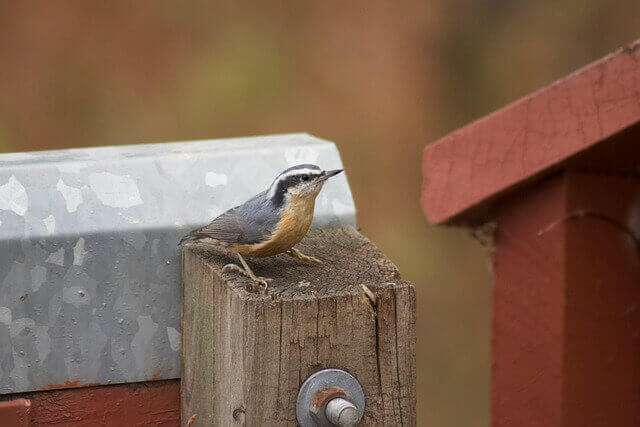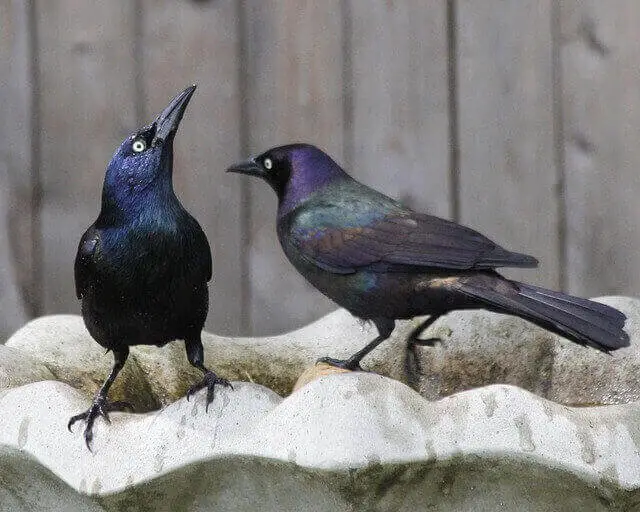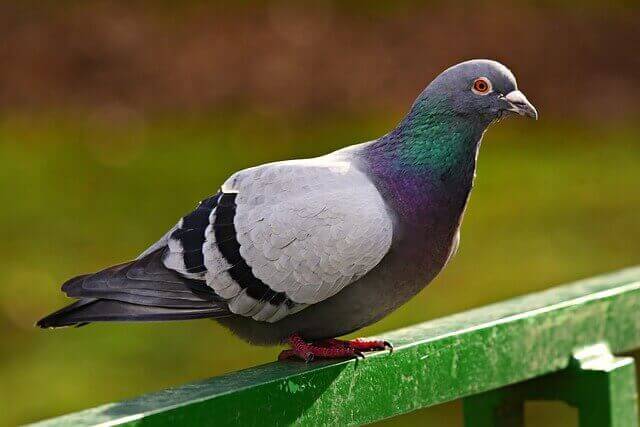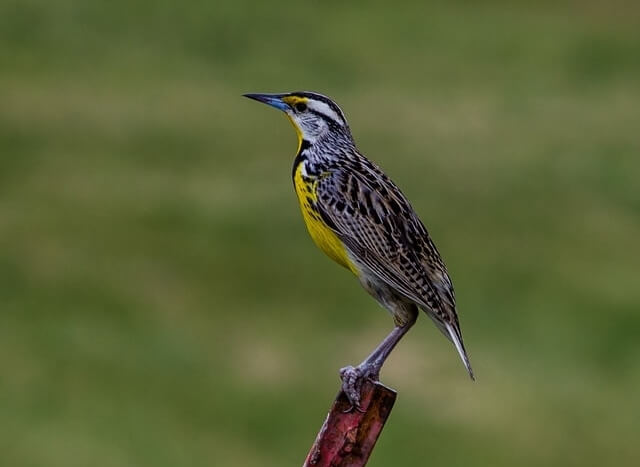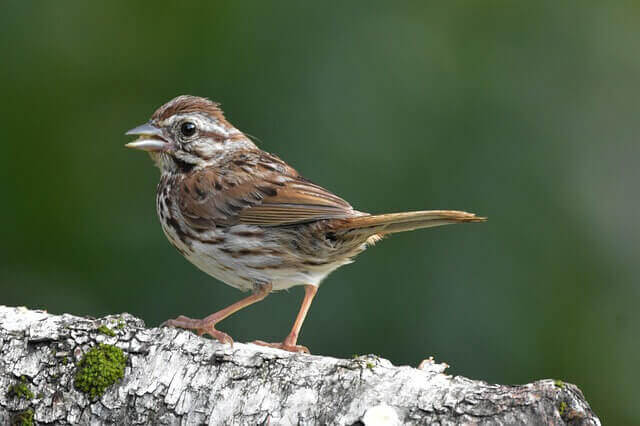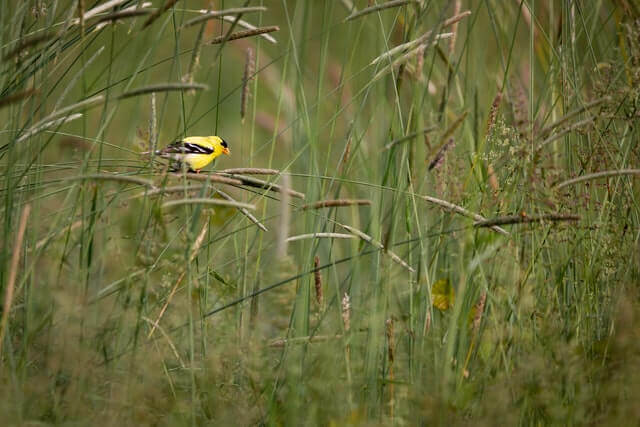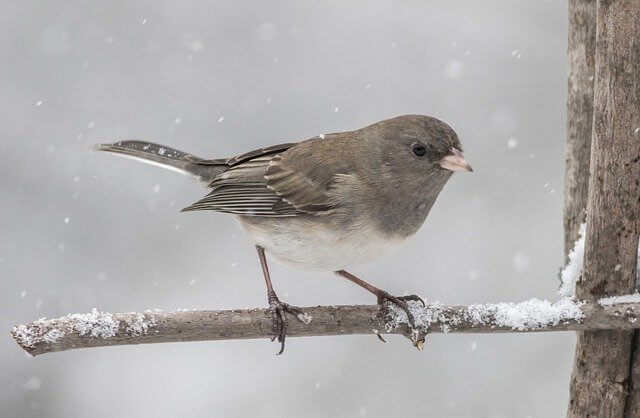Saskatchewan’s diverse landscapes, from prairies to boreal forests, provide a rich habitat for a variety of bird species. In this guide, we’ll introduce you to the 49 most common birds you can find in Saskatchewan, offering insights into their habitats, behaviors, and where you’re most likely to spot them.
Table of Contents
- 1 Most Common Birds In Saskatchewan
- 1.1 House Sparrow
- 1.2 American Robin
- 1.3 Black-capped Chickadee
- 1.4 Black-billed Magpie
- 1.5 American Crow
- 1.6 Red-winged Blackbird
- 1.7 Red-breasted Nuthatch
- 1.8 Common Raven
- 1.9 Mourning Dove
- 1.10 Common Grackle
- 1.11 Rock Pigeon
- 1.12 Western Meadowlark
- 1.13 Yellow Warbler
- 1.14 House Finch
- 1.15 Clay-colored Sparrow
- 1.16 Killdeer
- 1.17 American Goldfinch
- 1.18 Barn Swallow
- 1.19 Dark-eyed Junco
- 2 Frequently Asked Questions
- 2.1 What is the most common bird in Saskatchewan?
- 2.2 Do we have cardinals in Saskatchewan?
- 2.3 Are there finches in Saskatchewan?
- 2.4 Are there wild pheasants in Saskatchewan?
- 2.5 Are there wild peacocks in Saskatchewan?
- 2.6 Are there blue jays in Saskatchewan?
- 2.7 Are there ravens in Saskatchewan?
- 2.8 Are there robins in Saskatchewan?
- 2.9 Are there starlings in Saskatchewan?
- 2.10 What is the Saskatchewan bird?
- 3 Author
Most Common Birds In Saskatchewan
House Sparrow
The house sparrow is actually a member of the sparrow family Passeridae. It’s a tiny little bird with a typical size of just 5.5 – 7.1″ inches and a weight of just 25 – 35 grams. The house sparrows forage along trees, where it feeds on small insects and arthropods.
However, they are commonly seen throughout the continental United States, except for the northern parts of Washington state, British Columbia, Ontario, Quebec, and Alaska.
- Frequency: 38.42% (Statistic: eBird)
- Color: Gray head marking, a reddish-brown back, and gray underparts
- Habitat: Urban centers, suburban areas, backyards, edges, yards, and parks
- Range: North America, Central America, South America, Africa, Australia, New Zealand
- Size: 5.5 – 7.1″ inches in length
- Weight: 25 – 39 grams
- Diet: Insects, beetles, caterpillars, aphids,, grasshoppers, crustaceans, earthworms, vertebrates
- Family: Passeridea
- Genus: Passer
- Maps: Range Map – Sightings Map
- Sounds: Calls and Songs
Related: How to Attract Sparrows to your Backyard
American Robin
The American Robin is a seasonal songbird, a migratory bird of the thrush genus and Turdus, the broader lineage of thrush-like species. These birds prefer to roost in forested areas like backyards, shrubs, and fields.
If you want to attract more of such birds to your area, plant abundance of wooded plants near the area. As the leaves and twigs break down, they serve as perfect hiding places for robins.
- Frequency: 33.02%
- Color: Mostly brown on the back with an orange colored breast
- Habitat: Wooded areas, backyards, parks, fields
- Range: USA, Canada, Mexico
- Size: 12 – 16″ inches
- Weight: 72 – 95 grams
- Diet: Fruits, berries and insects (earthworms, beetles, caterpillars
- Family: Turdidae
- Genus: Turdus
- Maps: Range Map – Sightings Map
- Sounds: Calls and Songs
Related:
- Interesting American Robin Fun Facts
- How To Attract Robins To Your Yard – 7 Best Tips!
- 5 Best Bird Feeders For Robins (Tested & Rated For 2022)
Black-capped Chickadee
The black-capped chickadee has always been among the smaller members of tit family Paridae. Their loud chirping make these little birds a popular pastime for bird watchers and photographers. Their song is unlike that of any other songbird, it is long and loud.
It is quite common to find them in gardens, parks, backyards, and along the highways. The black-capped chickadee is widespread throughout Canada and the United States.
- Frequency: 30.15%
- Color: Black-cap, white on face, white/reddish-brown flanks
- Habitat: Deciduous and mixed forests, backyards, parks
- Range: USA and Canada
- Size: 11.5 -16 cm length
- Weight: 8 – 15 grams
- Diet: Insects, seeds, berries
- Family: Paridae
- Genus: Poecile
- Maps: Range Map – Sightings Map
- Sounds: Calls and Songs
Related: How Do I Attract Chickadees To My Yard?
Black-billed Magpie
The Black-billed Magpie or the (American Magpie) is common in open areas, in parks, near cemeteries, and in backyards. These birds are omnivores, and feed on rodents, insects, seeds, eggs, berries, and sometimes even garbage. They are good hunters and have been noted for stalking and stealing carrion.
It has a large range, starting from southern Alaska, central British Columbia, and the southern half of Saskatchewan, Manitoba, and Alberta, through the Rockies all the way down south to all the Rocky Mountain states including, Utah, Colorado, New Mexico, Idaho, Wyoming.
- Frequency: 26.72%
- Color: Iridescent blue plumage, has shorter and rounder wings, and a very long tail.
- Habitat: Towns, fields, stream corridors, feedlots
- Range: USA and Canada
- Size: 18″ – 24″ inches long
- Weight: 167 – 216 grams
- Diet: Insects, seeds, carrion, berries, rodents, eggs, nuts, garbage, pet food.
- Family: Corvidae
- Genus: Pica
- Maps: Range Map – Sightings Map
- Sounds: Calls and Songs
Related: How to Attract Magpies to your Garden? (In 4 Easy Steps!)
American Crow
The American Crow is an extroverted large, dark-colored passerine bird lineage of the genus Corvus. It is by far the most common birds found across much of North America, with over ten million breeding pairs at year’s end. Its range extends from central Mexico southward to the southern fringes of Montana and Wyoming.
Unlike most crows often found in the eastern parts of North America where they are mostly found in wooded swamps and wooded mountainsides, the American Crow can be found in dry areas in the north and southwestern parts of the continent.
- Frequency: 24.81%
- Color: Black
- Habitat: Open country, farms, parks, woodlands, towns, cities
- Range: Canada, USA, Mexico
- Size: 16 – 21″ inches
- Weight: 315 -620 grams
- Diet: invertebrates, carrion, seeds, eggs fish, grains, mice, frogs, and other small animals.
- Family: Corvidae
- Genus: Corvis
- Maps: Range Map – Sightings Map
- Sounds: Calls and Songs
Related: How To Attract Crows To Your Backyard: Expert Tips!
Red-winged Blackbird
The Red-winged blackbird is a beautiful, medium-sized bird from the Icteridae. Red-winged blackbirds prefer to roosts in trees in large flocks rather than out at the bird feeding station. They may roost for hours in a tree, but usually choose a spot in a large open clearing, where they can see each other clearly.
Like all birds, the red-winged blackbird requires a diet rich in nutritious sunflower seeds. During the breeding season, they will visit a variety of different types of sites throughout Canada, and the United States. They will eat a variety of foods in the daytime, such as, nectar insects, suet, grass seeds, and evening meals such as clover, millet, wheat, and sunflower seeds.
- Frequency: 22.28%
- Color: All black with red patches on shoulder and a yellow wing bar
- Habitat: Deciduous forests, conifers, roadside, rivers, backyards, parks
- Range: North America, Central America
- Size: 6.7 – 7.1″ inches length
- Weight: 41.5 – 65 grams
- Diet: Seeds and insects (butterflies, dragonflies, moths, frogs, worms, spider, snails, carrion, flies.)
- Family: Icteridae
- Genus: Agelaius
- Maps: Range Map – Sightings Map
- Sounds: Calls and Songs
Red-breasted Nuthatch
The red-breasted nuthatch is a small bird, about 4.5 inches in length, with an alert and energetic character. In the United States, the red-breasted nuthatch occurs from Texas south through central Mexico and into the Gulf coast states, in Canada it occurs from the Northwest Territories, Manitoba, Nova Scotia, New Brunswick, Newfoundland, Quebec, Saskatchewan, Yukon Territories, Ontario, Nunavut, Prince Edward Island, British Columbia, and Alberta.
It is a frequent visitor to parkland areas, wooded areas and nesting areas. Red-breasted nuthatch in that they feed on a variety of foods, including berries, suet, small seeds, carrion, grasshoppers, and various insect larvae and crustaceans.
- Frequency: 18.25%
- Color: Bluish gray upperparts with reddish brown underparts, a white face and throat with a black stripe runs through the eyes.
- Habitat: Coniferous trees but can also be found in mixed woods, backyards, and parks.
- Range: Canada and USA
- Size: 4.5″ inches long
- Weight: 9.9 grams
- Diet: Berries, suet, small seeds, carrion, grasshoppers, and various insect larvae, and crustaceans.
- Family: Sittidae
- Genus: Sitta
Related: How to Attract Nuthatches to your Backyard? Expert Tips!
Common Raven
The common raven is found throughout the Northern Hemisphere, it’s the second most widely distributed of the corvids. They are fairly common throughout much of North America except for the eastern states, where they tend to occur primarily in the south. Common Ravens are social birds that mostly live in burrows, brush piles, trees, cliffs, and islands. Ravens are primarily nocturnal, but they are not entirely nocturnal.
Most of the time, they are active throughout the day and during the night, they forage for their foods, eat, and go back to their hiding place. Ravens are very active during the spring and summer and most of the time, they eat vegetation, leaves, insects, carrion, seeds, and suet but they also eat small mammals, carrion, and berries.
- Frequency: 17.71%
- Color: All black iridescent plumage
- Habitat: Wooded areas, evergreen forests, tundra, roadside, grasslands, backyards, parks
- Range: Found throughout the Northern Hemisphere
- Size: 21 – 26 inches long
- Weight: 1.5 – 4.5 lbs.
- Diet: Mainly scavengers, feeding on carrion, beetles, and maggots.
- Family: Corvidae
- Genus: Corvus
Related: 18 Fun Facts About Ravens That Will Amaze You
Mourning Dove
If you are a lover of birds and nature in general, you may not be familiar with the Mourning Dove. This is fairly uncommon species that can often be found only in remote mountainous areas of western North America.The male Mourning Dove spends much of its time in the mountains and swamps of central North America.
Mourning Doves are the only doves found in Canada. There are only a few locations where it is commonly found. In the United States, Mourning Dove is considered a migratory bird. It takes off from the southern states and returns north every spring.
- Frequency: 16.09%
- Color: Light gray-brown and lighter and pinkish below. The wings have black spots.
- Habitat: Open habitats, urban areas, farms, prairie, grassland, wooded area
- Range: USA, Canada, Mexico, Central America, Greater Antilles
- Size: 12″ inches length
- Weight: 112 – 170 grams
- Diet: Rapeseed, corn, millet, safflower, sunflower seeds, pokeberry, sesame, and wheat.
- Family: Columbidae
- Genus: Zenaida
Related: Facts About Mourning Doves – 10 Things You Need To Know!
Common Grackle
The common grackle bird is a medium-sized icterid found in wide numbers throughout much of North America. First identified in 1758 by Carl Linnaeus, the common grackle has been the subject of numerous taxonomic studies, with estimates placing it in two of the most populous categories of all birds.
Some of the best places to find the common grackle are near woodland, forest edges, meadows, and marshes.. Another good place to find these birds is along beaches, because there is plenty of food to be had there. They nest in leafy, open areas such as thickets and shrubbery, and are particularly common at droughts and flooded areas.
- Frequency: 16.75%
- Color: Black overall with a blue, and purple iridescence. Its body plumage is a shimmering copper color.
- Habitat: Woodlands, marshes, meadows, parks, backyards, and fields
- Range: East of the Canadian Rockies, Canada and the United States
- Size: 11 – 13″ inches length
- Weight: 75 – 143 grams
- Diet: Minnows, eggs, berries, seeds, grain, insects, frogs, mice
- Family: Icteridae
- Genus: Quiscalus
Rock Pigeon
The Rock Pigeon or sometimes called the Rock Dove, rock pigeon or common pigeon is a species of Columbidae. Rock Pigeons are most often found in sugar-cane fields, along canyons, along steep cliffs, and in abandoned mining pits.
During the winter season they feed on sugary fruits and seeds left by grazing animals and birds. However, during the summer they nest in thick brush and take cover in burrows and rocks.
- Frequency: 15.31%
- Color: Dark blue-gray head, neck, and chest with a yellow, green and red iridescence on its neck and wings.
- Habitat: Woodlands, marshes, meadows, parks, backyards, and fields
- Range: Europe, North Africa, South Asia, Canada and USA
- Size: 11 – 15″ inches long
- Weight: 235 – 380 grams
- Diet: They are omnivorous, but also like seeds, plant matter, sugary fruits and grains.
- Family: Columbidae
- Genus: Columba
Related: Birds that look like Pigeons (Photos, ID & Stats)
Western Meadowlark
The western meadowlark, also known as marsh meadowlark or western meadowlark, is arboreal medium-size interim birds, about 8.5 inches long. It nests primarily on the ground in dry open plains across central and western North America. It also feeds on insects, seeds, and berries, with the majority of its diet consisting of these.
They prefer dry, mountainous areas, cliffs, and fields. Nests can be found in rocky areas, fields, thickets, along roadsides, in wooded areas, near water, and in parks. They are especially common in April and May.
- Frequency: 14.93%
- Color: Mostly brown upper with black streaks and yellow underparts
- Habitat: Pastures, prairies, grasslands, and fields,
- Range: Western and central North America
- Size: 8.5″ inches in length
- Weight: 90 – 115 grams
- Diet: Bugs, seeds, berries
- Family: Icteridae
- Genus: Sturnella
Related: Western Meadowlark Bird Facts You Didn’t Know
Yellow Warbler
The yellow warbler, a spectacular and lovely species, is a truly beautiful bird with a distinctive calling song. This bird can be found throughout Canada along roadsides, wet thickets and brushy areas, farmland, and urban parks. The yellow warbler also has a number of bird houses, which it uses for nesting. These unique bird houses are constructed from yellow birch, willow, or redwood logs.
Most of the nests are located in open areas near or next to water, either in fields or along the shores. Harsh, rocky areas are also ideal places for nests, though trees and large rocks should never be used for nesting purposes. The female yellow warbler can lay a single, slightly raised egg, which contains a highly developed blue wing.
- Frequency: 13.60%
- Color: Yellow with reddish streaks on the underparts
- Habitat: Pastures, thickets, brushy areas, prairies, grasslands, parks and fields,
- Range: USA and Canada
- Size: 4.0″ – 7.1″ inches long
- Weight: 7 – 25 grams
- Diet: Mayflies, moths, mosquitoes, beetles, damselflies, treehoppers, spiders, and berries.
- Family: Parulidae
- Genus: Setophaga
Related: How to Attract Warblers to your Yard? (Expert Tips)
House Finch
House finches are among the beautiful and interesting birds that can be found all over the world. It is originally from western North America where it is now introduced to the east part of the country and even to Hawaii.
It has long been known as a lovely bird that sings through its beautiful chirping song. Its graceful dancing style makes it one of the most attractive finches. Also, it is one of the few birds in this group that do not have a bib.
- Frequency: 13.52%
- Color: Reddish face and upper breast, brown streaks on back, belly, and tail.
- Habitat: urban and suburban areas, backyards, edges, yards, and parks
- Range: Canada, USA, Mexico
- Size: 5 – 6″ inches
- Weight: 16 – 27 grams
- Diet: Aphids, grains, seeds, berries, nettle, dandelion, sunflower
- Family: Fringillidae
- Genus: Haemorhous
Related: How to Attract House Finch to Your Yard?
Clay-colored Sparrow
The clay-colored sparrow, is a tiny New World sparrow of North America. They are seen across central Canada and central northern United States east to the Great Lakes. Clay-colored sparrows prefer wooded areas with trees and are often seen near nesting boxes. They nest near water in wetland areas, near plants in flooded forests, and in fields.
During the breeding season, male clay-colored sparrows fly from one bird house to another, searching for females with eggs. The male passes through canopies, then returns to the nest to wait for the female to bring home the spoils. This species does best in fragmented habitats, and is most active in the early morning and evening.
- Frequency: 13.52%
- Color: Light brown upper, and pale underparts, with dark streaks on the back and wings.
- Habitat: Thickets, shrublands, backyards, edges, yards, and parks.
- Range: USA and Canada
- Size: 5.1″ – 6.1″ inches long
- Weight: 12 grams
- Diet: Insects, beetles, caterpillars, aphids,, grasshoppers, crustaceans, earthworms, vertebrates
- Family: Passerellidae
- Genus: S. pallida
Killdeer
Killdeer bird species is a large plover found in North America. It was first described and given its present accepted scientific name in 1758 by Carl Linnaeus in the tenth edition of his SystemaNaturae.
The winter migratory birds are smaller than those in the spring. In the fall they take off in large numbers to the warmer southern parts of North America. Their winter ranges may extend as far south as Texas and Louisiana and as far north as northern Minnesota and southern Canada. Their reproductive patterns differ from species to species.
- Frequency: 13.48%
- Color: Brownish color on top and white below. Has a white chest with two black bands, brown face is marked with black and white patches.
- Habitat: Marshes, meadows, fields, meadow edges, river banks, coastlines, and in parks.
- Range: USA, Southern Canada and Mexico
- Size: 7.9″ – 11″ inches long
- Weight: 72 – 121 grams
- Diet: Insects, invertebrates and seeds,
- Family: Tyrannidae
- Genus: Sayornis
American Goldfinch
The American goldfinches which are found throughout much of the continent, the American goldfinches migrate only to the South and Central American rain forests during the migration. Their beautiful call, a high-pitched flute-like tone, is very distinctive and is called “chirp” by many people.
Indeed, it is so distinctive that if you were to stand quietly near one in any garden or park, you would not mistake it for an ordinary garden bird. This bird ranges from Alberta to North Carolina during breeding, and heads south to Mexico during the winter.
- Frequency: 13.42%
- Color: Face, neck, and underside are yellow, black wings with white bars
- Habitat: Deciduous forests and thickets, roadside, grasslands, backyards, meadows
- Range: Canada, USA and Mexico
- Size: 4.3 – 5.5″ inches length
- Weight: 12 -18 grams
- Diet: Grass, dandelions, chickweed, sunflowers and ragweed, thistle, red alder, birch, spruce seeds
- Family: Carduelinae
- Genus: Spinus
Related: American Goldfinch Interesting Facts
Barn Swallow
The barn swallow is by far the most common species of swallow in North America. It’s a very distinctive, passerine, with a highly long, deeply curved lower wing and yellowish underparts. It’s found from Canada to the Mexican states of Baja and Jalisco. They are common in disturbed and agricultural areas and feed on a variety of foods.
These birds have a unique relationship with the cliffs in which they live. Many experts think that they move up and down the cliffs to mate and nest, but others believe that they migrate up the cliffs during the winter migration to feed on rocky shoreline areas and small islands along coastallines.
- Frequency: 13.23%
- Color: Has a blue back, wings, and tail, and reddish-brown underparts. Cinnamon-colored forehead.
- Habitat: Open country with low vegetation, pasture, farmland and meadows, near water sources.
- Range: North and South America, South Africa, Europe and Australia.
- Size: 6.5 – 7.5″ long
- Weight: 16 – 22 grams
- Diet: Insects, aphids, and flying ants.
- Family: Hirundinidae
- Genus: Hirundo
Related: How to Attract Swallows to my Yard? (The Expert’s Guide)
Dark-eyed Junco
The dark-eyed junco is a rare species of sparrow, native to northern North America. This tiny bird is extremely common across much of northern temperate North America and occasionally ranges as far south as the coldest winter latitudes of the arctic.
The bird nests in large trees along the sides of roads, where it can easily spot food and hide from predators. Nests can be found in fields, meadows, along power lines, and in all sorts of woody areas.
- Frequency: 12.96%
- Color: Gray head, neck, breast, gray/brown backs and wings, white underside
- Habitat: Wooded areas, forest edges, roadsides, gardens, parks.
- Range: USA and Canada
- Size: 5.1 – 6.9″ inches
- Weight: 18 – 30 grams
- Diet: Seeds, insects, and arthropods
- Family: Passeriformes
- Genus: Junco
Related: Fun Facts About Dark-eyed Juncos
These common backyard birds below have a frequency of less than 13% year-round
- Downy Woodpecker – 12.30% Frequency
- Northern Flicker 12.20%
- Blue-winged Teal 12.14%
- Brown-headed Cowbird 11.98%
- Northern Shoveler 11.67%
- House Wren 10.88%
- Song Sparrow 10.52%
- Eastern Kingbird 10.35%
- Tree Swallow 10.01%
- Blue Jay 9.97%
- Savannah Sparrow 9.55%
- Vesper Sparrow 9.39%
- Chipping Sparrow 9.12%
- Horned Lark 8.81%
- American Wigeon 8.57%
- White-throated Sparrow 8.42%
- Cedar Waxwing 8.41%
- Yellow-rumped Warbler8.10%
- Least Flycatcher 7.74%
- Brewer’s Blackbird7.66%
- Lesser Scaup 7.34%
- Yellow-headed Blackbird 6.99%
- Hairy Woodpecker 6.48%
- White-breasted Nuthatch 6.10%
- Gray Catbird 5.70%
- Pine Siskin 5.63%
- European Starling 5.45%
- Western Kingbird 5.18%
- Baltimore Oriole 5.13%
- Brown Thrasher 5.08%
Frequently Asked Questions
What is the most common bird in Saskatchewan?
According to eBird, the house sparrow is the most common bird in Saskatchewan. This small bird is seen in 38.5 percent of all bird sightings in the province. The second most common bird is the American robin, followed by the black-capped chickadee.
Do we have cardinals in Saskatchewan?
The Northern Cardinal is the only cardinal that is seen in Saskatchewan. Cardinals are not very common in the province, with a frequency of occurrence of just 0.0173% according to eBird. So if you’re hoping to spot a cardinal on your next nature walk in Saskatchewan, you might want to keep your eyes peeled!
Are there finches in Saskatchewan?
There are indeed finches in Saskatchewan! There are six species of finches that have been recorded in Saskatchewan: House Finch, American Goldfinch, Purple Finch, Gray-crowned Rosy-Finch, Cassin’s Finch, and Lesser Goldfinch.
Are there wild pheasants in Saskatchewan?
Yes, there are wild pheasants in Saskatchewan. The only species is the Ring-necked Pheasant. These birds are not native to Saskatchewan, but they were introduced in the early 1900s for sport hunting. The Ring-necked Pheasant is a game bird and is popular with hunters. The population of these birds has declined in recent years due to habitat loss, domestication and overhunting.
Are there wild peacocks in Saskatchewan?
There are no wild peacocks in Saskatchewan. Peacocks are not native to Canada, and there is no evidence that any have been introduced to the wild in Saskatchewan. While it’s possible that some escaped from captivity, it’s unlikely that they would be able to survive the cold winters. So, if you’re looking for a glimpse of a peacock, your best bet is to visit a zoo or bird sanctuary.
Are there blue jays in Saskatchewan?
Yes, there are blue jays in Saskatchewan. The blue jay is a member of the crow family and is found in many parts of North America. In Saskatchewan, blue jays can be found in forests, parks, and even in some urban areas. They are attracted to areas with trees and bushes where they can find food and shelter.
Are there ravens in Saskatchewan?
In Saskatchewan, common ravens are found in the mixed-wood and coniferous forests of the boreal zone. They are also found in the aspen parkland belt that extends from central Alberta to southern Manitoba. In recent years, ravens have been expanding their range into the prairie provinces.
Are there robins in Saskatchewan?
Yes, there are American robins in Saskatchewan. They are the second most common bird in the province. The American robin is a migratory bird, and can be found in Saskatchewan from March to September. The majority of robins breeding in Saskatchewan are found in the southern part of the province. They can be found in many different habitats including forests, meadows, and even cities.
Are there starlings in Saskatchewan?
Yes, there are European starlings in Saskatchewan. These birds are not native to the province, but they have been introduced and have established populations in many parts of the province. Starlings are found in both urban and rural areas, and they can be a nuisance because of their loud calls and their tendency to roost in large groups.
What is the Saskatchewan bird?
The Sharp-tailed grouse, known as the prairie chicken, was chosen as Saskatchewan’s provincial bird in 1945. The Sharp-tailed grouse is a popular game bird is found throughout the province and is a symbol of Saskatchewan’s vast prairies.


